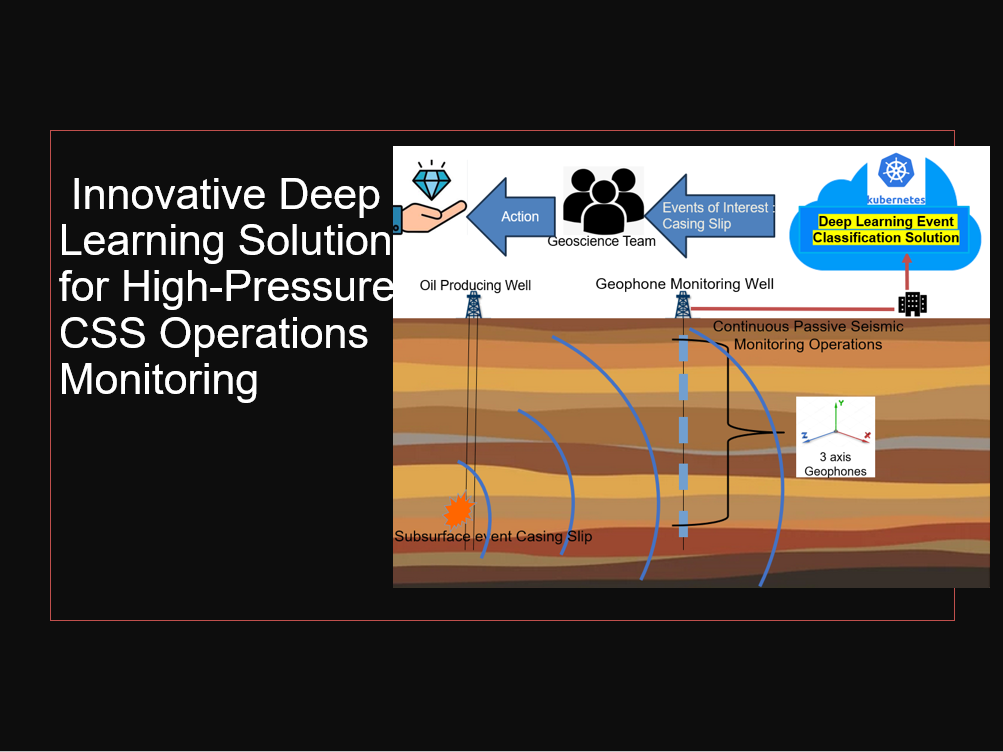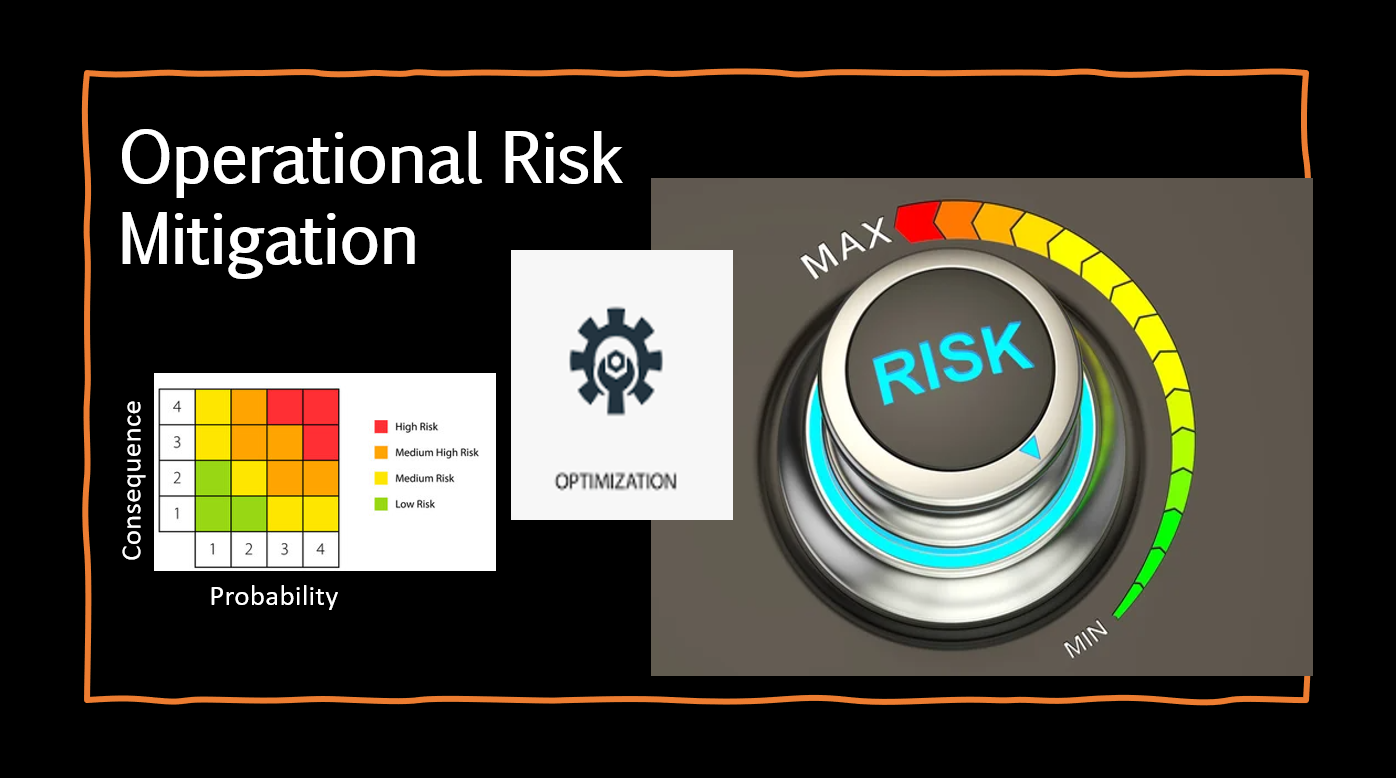OUR WORK
Latest & Greatest
Increase Production

Water Network Optimization
Business Objective:
In the realm of oil production, INSITU sites serve as pivotal hubs responsible for oil extraction, inevitably resulting in the concurrent production of water. The ratios between oil and water produced are subject to dynamic fluctuations contingent on various factors including INSITU technology, reservoir quality, and seasonality. The management of this water by the production plant is of paramount importance. Two primary options exist for water management: reuse for steam generation or storage in reservoirs and water wells. Both alternatives, however, face the inherent constraint of capacity. Consequently, the endeavor to maximize oil production inherently entails an imperative to balance and optimize the flow of water within the network.
Challenges:
The project confronts several notable challenges. First and foremost, there exists an absence of a comprehensive mapping of the water network. This lack of clear spatial understanding exacerbates the complexity of water flow management. Additionally, the accuracy and reliability of production data are compromised due to the reliance on manual testing procedures. Furthermore, inherent data quality issues persist in relation to the measurements obtained from water network flowmeters. These challenges collectively create an intricate operational environment that necessitates innovative solutions.
Solution Methodology:
To address the intricate web of challenges, a sophisticated mathematical model centered on the water network was formulated. This model intricately accounts for various constraints encompassing pipe capacities, sink capacities, steam demand, and water well capacities. The core of this endeavor involved the implementation of a digital optimization model, drawing inspiration from the Ford Fulkerson algorithm, renowned for its prowess in network flow optimization problems. By harnessing the power of this algorithm, the project seeks to maximize the flow of water within the network, thereby optimizing both water and oil production simultaneously.
Maximizing flow within the water network constitutes the key to optimizing production. Achieving this requires meticulous selection of water wells based on the water-to-oil ratio. Consequently, the solution methodology hinges on the dual objective of augmenting oil production while efficiently managing the associated water flow.
Business Impact:
The implementation of this operations research project promises substantial business impact, manifesting in the following ways:
Streamlined Water Network Management: The project ensures the establishment of a more structured and streamlined approach to water network management. The intricate interplay between oil and water production is harmonized, thereby mitigating potential disruptions and inefficiencies.
Operational Efficiency: By comprehensively understanding and optimizing the water network, the project contributes to an enhancement in overall operational efficiency. This translates into cost savings and improved resource utilization.
Production Optimization: A direct consequence of the project's success is the optimization of production. By maximizing the flow of water, it becomes possible to concurrently enhance oil production, effectively addressing the primary objective of the INSITU sites.
Bottleneck Removal: The project enables a thorough understanding of how the water network impacts production. This knowledge empowers the identification and elimination of bottlenecks, facilitating the seamless flow of operations.
In conclusion, this operations research project represents a pivotal undertaking in the realm of oil production. By addressing complex challenges through an innovative mathematical model and digital optimization, it strives to achieve a harmonious balance between oil and water production while delivering substantial business benefits in the form of streamlined operations and enhanced production efficiency.
We developed a water-network optimization model that minimized bitumen production loss taking into account movement, storage, processing, and disposal constraints on water distribution – enabling the asset to produce 1.5K barrels/day more oil than previously possible. This was a $20M financial win for our operating asset.

Maintenance Schedule Optimization
• Title: Operations Research and Maintenance Project: Enhancing Efficiency and Reliability in O&G Maintenance
•
• Introduction
•
• The oil and gas (O&G) industry operates within a highly competitive and maintenance-intensive environment, where efficient maintenance practices play a pivotal role in ensuring profitability, reliability, and safety. The success of an O&G business hinges on its ability to manage maintenance operations in a cost-effective manner while prioritizing safety and reliability. This complex operational challenge necessitates the development of innovative solutions to optimize maintenance schedules, considering various constraints such as material availability, trades, capacity, weather, system conditions, and network constraints. In response to this challenge, we propose a decision optimization-powered solution that acts as a smart assistant for schedulers, aimed at streamlining maintenance operations, reducing waste, and enhancing overall efficiency.
Business Problem/Opportunity:
In the realm of Oil and Gas (O&G), maintenance stands as a critical linchpin in ensuring operational efficiency and profitability. The challenge lies in conducting maintenance activities in a manner that is not only cost-effective but also contributes to the reliability and safety of plant operations. The maintenance schedule, akin to orchestrating multiple games of Tetris simultaneously, necessitates meticulous coordination across various constraints. These constraints span from material availability and trade expertise to capacity, weather conditions, system status, and network limitations. The pivotal need is to establish a stable, non-reactive, and risk-prioritized maintenance schedule that adheres to stringent quality standards.
Solution Methodology:
In response to the multifaceted challenges posed by maintenance scheduling, our solution takes the form of a decision optimization-powered assistant for schedulers. This digital tool serves as an invaluable aid, providing recommendations within a dedicated PowerBI report linked to the SAP schedule. The solution's core functionality revolves around assisting schedulers in the judicious allocation of tasks, aligning with the principle of "right work at the right time." By generating an optimized schedule based on work priority, the system concurrently addresses capacity wastage concerns.
This intelligent assistant does more than streamline scheduling; it also acts as a robust enforcer of processes and standards. From prompt cleaning of overdue work to front-loading schedules with critical tasks, the tool minimizes waste on capacity. It further offers insights into material vulnerability, enabling pre-emptive actions to mitigate risks and enhance overall efficiency.
Value/Impact:
The implementation of our decision optimization-powered solution yields a multitude of tangible benefits, significantly transforming the operational landscape of maintenance-intensive industries like O&G. The foremost impact is the reduction of risk, improvement in reliability, and a substantial decrease in maintenance costs within the oil sands business.
In a manufacturing plant boasting several thousand workers, our team devised a mathematical optimization model tailored to generate maintenance schedules with precision. This model operates within the framework of business rules, resource limitations, budget constraints, and the correct sequencing of trade tasks—expressed as mathematical constraints. Previously, this intricate task was handled manually by a team of schedulers, resulting in sub-optimal schedules and notable resource wastage.
The implementation of our model, efficiently solving approximately 20,000 interrelated tasks over a 90-day span using IBM's CPLEX cloud-based service, revolutionized scheduling. Optimized schedules were visualized and communicated through Tableau, leading to a substantial improvement in plant reliability. The resultant cost reduction amounted to $15 million, a testament to the efficiency gains achieved by the tool. Furthermore, the business realized cost avoidance of $50 million by optimizing contractor usage, showcasing the far-reaching impact of our decision optimization solution on the bottom line.
•
Reduce Costs

Innovative Deep Learning Solution for High-Pressure CSS Operations Monitoring
Title: Innovative Deep Learning Solution for High-Pressure CSS Operations Monitoring
Introduction:
In the realm of Insitu CSS Operations, the demand for high-pressure steam, reaching up to 6 Mega Pascals, is crucial for efficient oil extraction from reservoirs. Operating under these extreme pressure conditions, Continuous Steam-Solvent (CSS) operations necessitate a meticulous monitoring system. The backbone of this monitoring is a seismic network, comprised of geophone wells equipped with 3-axis geophones strategically placed at varying depths. The seismic network plays a pivotal role in tracking subsurface seismic activity, ensuring the safety and efficacy of CSS operations.
The Challenge:
CSS operations generate an immense volume of data, with more than 10,000 seismic events detected passively. This data, exceeding 1 TB, requires high-frequency analysis for timely decision-making in operations. The challenge lies in developing a solution that not only processes this vast amount of data efficiently but also eliminates the need for manual analysis, enabling real-time monitoring.
The Innovative Solution:
Our team engineered a groundbreaking deep learning pipeline, deploying an ensemble of Convolutional Neural Network (CNN) models. This custom solution, tailored specifically for CSS operations, was seamlessly integrated into production using Azure Kubernetes, ensuring high availability and reliability of the monitoring model. The deep learning system successfully identifies seismic events of interest with an impressive accuracy rate surpassing 99%, as validated through extensive field tests conducted over several months across multiple pads.
Key Achievements:
1. Real-Time Monitoring: The implemented solution facilitates real-time monitoring of CSS operations, eliminating the need for labor-intensive manual analysis.
2. Accuracy and Reliability: The custom deep learning pipeline surpasses the accuracy of manual analysis, ensuring that seismic events crucial to operations are identified promptly and accurately.
3. False Positive Reduction: The tool effectively minimizes false positives, mitigating the impact on production and maintenance expenses associated with CSS operations. Each reduction in false positives translates to a tangible improvement in overall operational efficiency.
4. Patent Recognition: Our contribution to this project resulted in a patent acknowledgment, highlighting the uniqueness and innovation of the deep learning solution designed for CSS operations monitoring.
5. Alberta Innovates Grant: Recognizing the project's significant contribution to operational integrity and environmental protection, Alberta Innovates awarded a grant of 200,000 CAD. The solution's ability to enhance operational integrity directly contributes to minimizing the risk of groundwater pollution resulting from CSS operations.
Conclusion:
In the dynamic landscape of CSS operations, our innovative deep learning solution has emerged as a game-changer, revolutionizing the monitoring and analysis of seismic data. By seamlessly integrating advanced technology into the operational framework, we have not only improved the accuracy and efficiency of CSS operations but have also received industry recognition through a patent and a substantial grant from Alberta Innovates. This project stands as a testament to our commitment to advancing operational excellence in the oil and gas sector, setting new standards for safety, accuracy, and environmental responsibility in high-pressure CSS operations.
Optimize Capital Expenditure

Operations Research - Financial Portfolio Analysis
Title:
Operations Research - Financial Portfolio Analysis
Introduction:
In the Oil and Gas (O&G) industry, the development of a robust financial portfolio and the formulation of long-term strategies are indispensable endeavors. The success of companies operating within this sector heavily depends on their ability to carefully select projects, allocate resources, and navigate through intricate business constraints. These constraints encompass factors such as asset-specific budget constraints, strategic drivers linked to environmental considerations, and rapidly evolving scenarios. In light of these challenges, a systematic and programmatic solution is required to ensure the optimal allocation of resources and maximize Net Present Value (NPV). This project introduces a cutting-edge decision optimization tool designed to address these complex financial analysis challenges.
Project Overview:
The primary objective of this Operations Research Financial Portfolio Analysis Project is to develop a comprehensive decision optimizer tool that can guide O&G companies in constructing their financial portfolios and formulating strategies for the next 5, 10, and 25 years. This tool leverages operations research techniques to effectively address the multifaceted nature of the O&G industry's financial management.
Challenges in Financial Portfolio Analysis:
The O&G industry faces numerous challenges when it comes to financial portfolio analysis:
Nested Business Constraints: Companies must consider a myriad of nested constraints when selecting projects. These constraints often pertain to individual assets related data and their respective capital budgets. Decisions regarding project selection are thus influenced by the available financial resources allocated to each asset based on different data dimensions to facilitate the custom need
Environmental Constraints: As the world grapples with environmental concerns, O&G companies are increasingly constrained by factors such as greenhouse gas emissions. Strategies must align with these constraints to ensure sustainable and responsible operations.
Production Related Constraints: Some Projects for eg. in upstream business
Rapidly Changing Scenarios: The O&G landscape is characterized by volatility, and scenarios under which financial portfolios are optimized can change rapidly. Sometimes, these changes are drastic, necessitating a dynamic and adaptable solution.
The Solution: Decision Optimizer Tool:
Our solution to these financial analysis challenges is a mixed integer Linear Programming (MILP)decision optimizer tool. This tool employs advanced operations research algorithms to navigate the complex landscape of financial portfolio management within the O&G industry. Here's how it works:
Portfolio Selection: The decision optimizer tool evaluates a range of project options and strategically selects those that align with the company's goals and constraints. It considers factors like asset-specific budget constraints and environmental limitations.
Scenario Modeling: Recognizing the volatile nature of the O&G industry, the tool offers scenario modeling capabilities. It allows companies to assess the impact of changing variables on their financial portfolios and strategies, enabling agile decision-making.
Maximizing NPV: Ultimately, the primary goal of financial portfolio analysis is to maximize NPV. The tool employs sophisticated mathematical models to optimize portfolio composition while ensuring that all constraints are met.
Benefits of the Decision Optimizer Tool:
The decision optimizer tool offers several key benefits to O&G companies:
Enhanced Decision-Making: By systematically evaluating project options and considering multiple constraints, the tool assists in making well-informed decisions at lightning speed that align with the company's long-term objectives.
Improved Resource Allocation: With the ability to allocate resources efficiently, companies can make the most of their available capital budgets, leading to improved financial performance.
Responsiveness to Change: The tool's scenario modeling capabilities enable companies to adapt swiftly to evolving market conditions and constraints, ensuring resilience in a dynamic industry.
Conclusion:
In the O&G industry, financial portfolio analysis is a critical component of long-term success. The decision optimizer tool presented in this project represents a significant step forward in addressing the complex challenges faced by O&G companies. By leveraging operations research techniques, this tool empowers companies to construct financially sound portfolios, navigate intricate constraints, and maximize NPV while remaining agile in the face of change. It is a valuable asset for any O&G company seeking to secure its financial future and uphold responsible business practices.

Software tools and visualization help make dents in cash operating costs
Conceived, designed, and developed software and visualization tools to comprehensively assess and categorize contractor populations across multiple expansive industrial sites with thousands of workers. These tools were extensively used to analyze labor supply and demand across the sites, particularly for maintenance trades. Notably, at one employer, the implementation of these dashboards enabled a 70% reduction in maintenance contractors, saving $50M annually in controllable expenses. Furthermore, the introduction of similar tools at another employer led to the reduction of 1,500 contractor positions, resulting in estimated annual pre-tax savings of $200 million. Beyond financial gains, these initiatives significantly heightened workforce productivity and substantially lowered safety incidents.
Manage Operational Risk

Optimal risk mitigation project selection using mixed integer programming
Optimal risk mitigation project selection using mixed integer programming
Risk is measured as the product of consequence and probability – and a set of capital projects are aimed at reducing both at the operating assets. We applied mathematical optimization to risk-mitigation project selection, demonstrating that within capital and resource constraints, a mathematical model could facilitate faster and improved risk-mitigation. The model was coded as a mixed integer linear programming (MILP) problem (in BM CPLEX) and solved for a large array of projects in under a few seconds. The rank and sort approach used by human planners delivered a sub-optimal solution which took many hours to develop. The tool made it possible to run multiple scenarios under different capital constraints simultaneously and each time delivered better results (quantified as the objective function) than manual approaches.

Driver Score Card
**Business Problem/Opportunity: Enhancing Driver Safety in Mining Operations through Operations Research and Maintenance Project**
In the challenging landscape of an oil sands mine, a tragic incident involving a fatality due to haul truck collisions prompted a rigorous examination of driver behavior. Recognizing the critical need to address safety concerns and mitigate risks, our operations research and maintenance project set out to quantify the hazardous behaviors of drivers within the fleet. The ultimate objective was to cultivate a safer environment for mining operations, particularly focusing on haul trucks.
**Data Collection and Analysis: Leveraging Technology for Insightful Solutions**
The cornerstone of our initiative lies in the comprehensive analysis of data collected from both Mining Haul trucks and Light Vehicle Fleet. Harnessing the power of GPS and Vehicle Information Systems, we systematically captured crucial data points that allowed us to delve deep into the nuances of driver behavior.
Our approach involved the calculation of specific features associated with unsafe driving practices, including speeding, speeding on ramps, speeding from intersections, hard braking, close following, and the identification of potential collisions. The richness of the data was heightened by the inclusion of the fourth dimension, time, which allowed us to create a robust 4D dataset (XYZ + time). This dimensional clustering was pivotal in narrowing down incidents of interest and provided a granular understanding of the spatial and temporal aspects of driver behavior.
**Incident Detection and Analysis: Uncovering Patterns for Proactive Measures**
The clustered data facilitated a meticulous analysis of driver movements, enabling us to detect potential collisions and instances of tailgating by truck operators. This proactive approach not only ensured a swift response to critical incidents but also empowered us to identify recurring patterns and trends in driver behavior.
Our commitment to safety extended to the implementation of advanced analytical tools, such as PowerBI, to report and measure driver behavior. The identified safety infractions, based on the calculated features, were systematically presented through intuitive visualizations, providing actionable insights for front-line leaders and haul truck operators.
**Strategic Coaching for Improved Safety: Empowering Front-Line Leaders**
One of the pivotal outcomes of our operations research and maintenance project is the creation of a structured coaching mechanism. The safety infractions reported through PowerBI serve as a comprehensive guide for front-line leaders, offering a tangible framework for coaching sessions with haul truck operators.
These coaching sessions are designed not only to rectify specific instances of unsafe behavior but also to foster a culture of continuous improvement. By addressing the root causes of safety infractions and providing targeted feedback, front-line leaders play a crucial role in shaping a safety-conscious mindset among haul truck operators.
**Conclusion: A Paradigm Shift Towards Enhanced Safety Culture**
In conclusion, our operations research and maintenance project stand as a testament to our commitment to safety and operational excellence. By leveraging cutting-edge technology and analytical methodologies, we have successfully quantified and addressed hazardous driver behaviors in mining operations. The insights gained from this project serve not only as a catalyst for immediate corrective actions but also as a foundation for fostering a sustainable safety culture within the organization.
As we continue to refine our approach and incorporate real-time data analytics, we are confident that this project will contribute significantly to the overarching goal of ensuring a safer and more secure working environment in oil sands mining operations.
